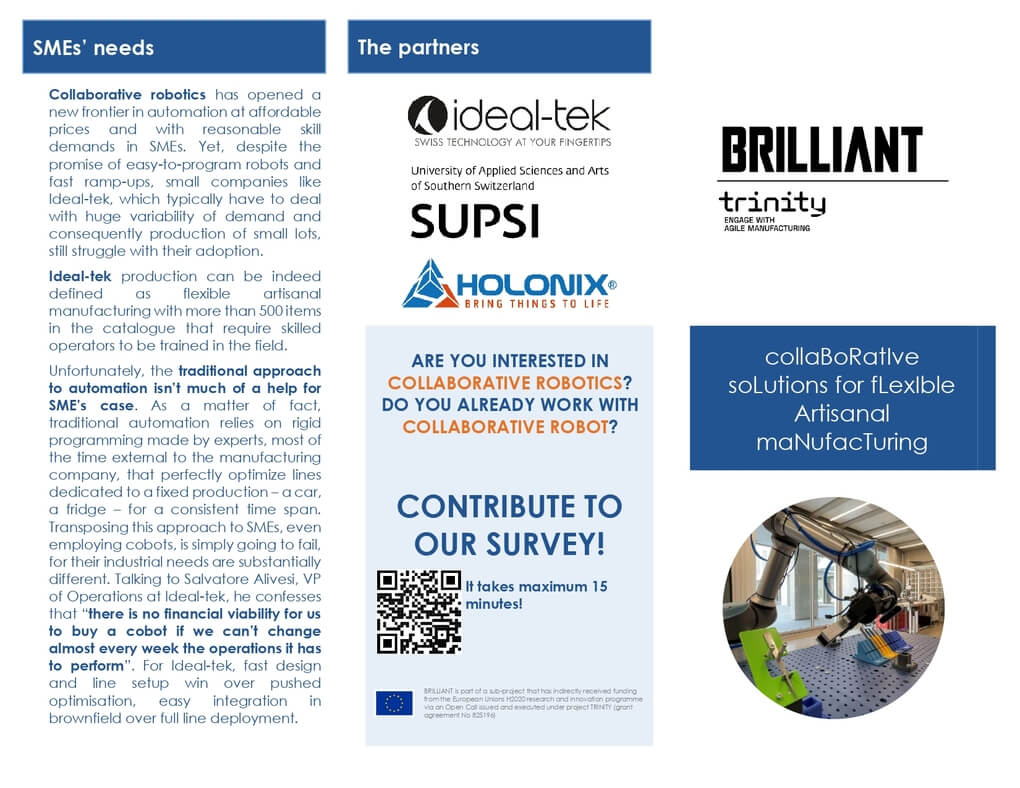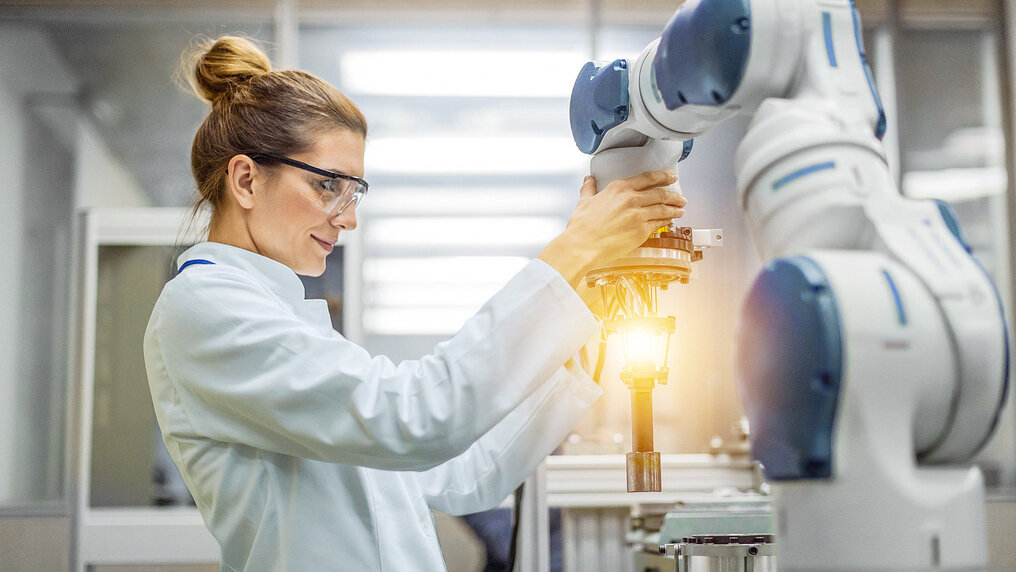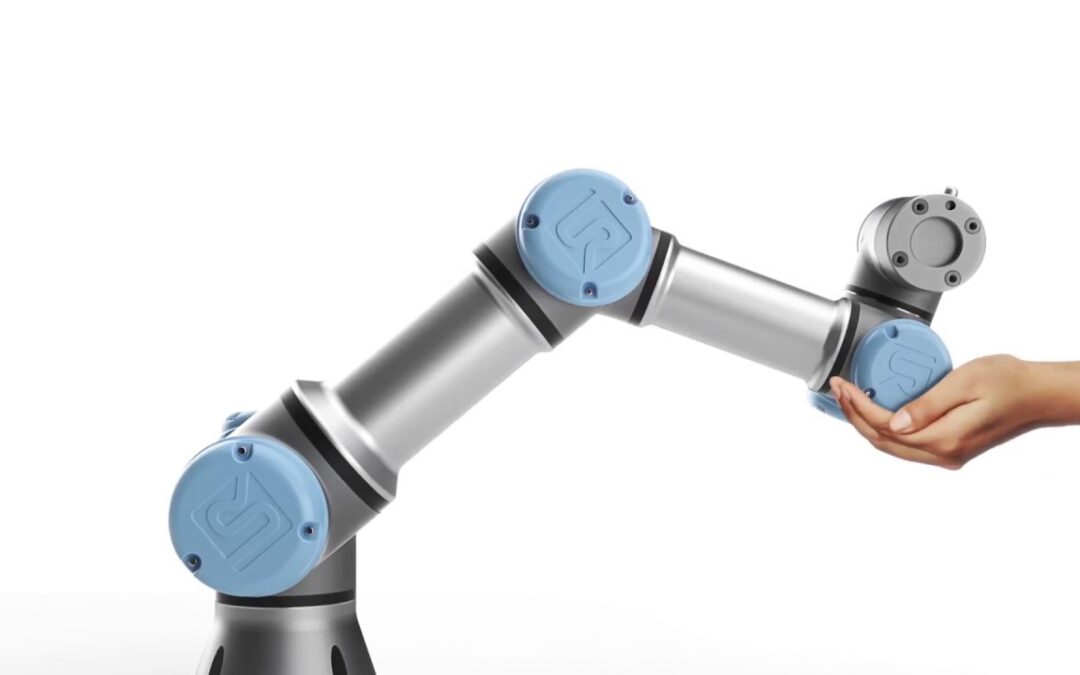A survey on collaborative robots from Supsi
20 April 2022
Are you a manufacturing company, a system integrator or a researcher? Please complete this survey, we really appreciate your contribution!
The survey is developed by the University of Applied Science and Arts of Southern Switzerland in collaboration with a PhD student from Politecnico di Milano. It targets the assessment of the adoption and perception of collaborative robotics in both industry and research. The survey should take maximum 10 minutes. Questions marked with an asterisk (*) are required. The survey is completely anonymous. By participating to this survey, if you like, you will have the chance to receive the results and a set of guidelines to adopt collaborative robotics. If you have any questions about the survey, please email us at elias.montini@supsi.ch or info@kitt4sme.eu. Contribute to the study conducted by the Sustainable Production Systems Lab of ISTePS to get more insights about this technology
In contrast to conventional automation and robotics which usually replace workers, collaborative robots are developed to strictly collaborate with humans. Typical examples can be found in assembly applications, where robots may be hardly affordable if completely automated given tasks and work pieces complexity. However, they become profitable if certain actions are performed by exploiting both workers’ flexibility and collaborative robots’ repeatability.
Trinity BRILLIANT and KITT4SME Horizon 2020 projects:
Within the scope of Trinity BRILLIANT (collaBoRatIve soLutions for fLexIble Artisanal maNufacTuring) and KITT4SME (platform-enabled KITs of arTificial intelligence FOR an easy uptake by SMEs) projects both part of the Horizon 2020 EU funding programme, the Sustainable Production Systems (SPS) Lab is realising two different collaborative work cells to combine flexibility and dexterity of humans with repeatability of cobots. The goal of the two experiments is to develop smart, orchestrated and reconfigurable work cells reducing the adoption barriers of collaborative solutions for SMEs. The first work cell is deployed at Ideal-tek SA, a Swiss company producing high-end tweezers and cutters. In this scenario, a collaborative robot is used to perform work piece handling to carry out welding, grinding and finishing operations. The second work cell is developed in Ghepi Srl, aiming to support the assembly of moulded work pieces.
THE BRILLIANT PROJECT
Objectives:
- Developing smart, orchestrated and reconfigurable collaborative work cells to reduce adoption barriers of collaborative solutions for SMEs
- Combine flexibility and dexterity of humans with repeatability of cobots towards artisanal manufacturing 4.0.
Expected Impacts:
- -30% of the production time
- +40% of the variability of workers’ jobs
- -20 % scraps due to the repeatability of the cobot
A quick overview of the brochure:


The survey about human collaborative robots
KITT4SME realised a survey in collaboration with TRINITY-BRILLIANT to better understand the current landscape of collaborative robotics applications, as well as the pros and cons o bringing collaborative robotics to SMEs, and the existing challenges and barriers. The survey targets manufacturing end-users, system integrators, and researchers involved in collaborative robotics.

With a similar goal but targeting Artificial Intelligence, in 2021 the SPS Lab realised the KITT4SME report on AI adoption, which was highly valued by the participants and the community.
If you are interested in this topic and you would like to actively contribute to this study, take the survey! It takes less than 10 mins and, at the end, you will get access to the current survey results and a set of useful guidelines to adopt collaborative robotics in your company.
Would you like to collaborate on sustainable production systems?
Are you willing to realise a collaborative robotics application or a digital twin of your production system? Contact us at andrea.bettoni@supsi.ch, michele.fiorello@supsi.ch.
The publication of this article has been extracted and freely adapted from Department of Innovative Technologies – SUPSI

